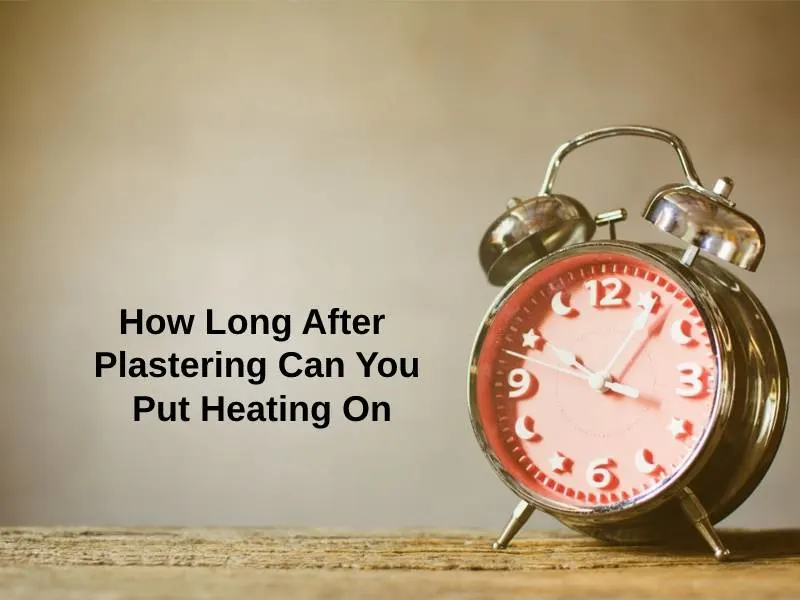Exact Answer: 2 – 7 Days
Plastering means to cover a wall, ceiling, or any other structure of a house or a building with plaster. The purpose of plastering the walls or any other architectural form is to protect and safeguard it against environmental and atmospheric effects like dust and dirt, and also provide the structure with a polished look and professional finishing of the surface.
It helps in covering rough, uneven, unflattering walls with a plaster that is nothing but a mixture of cement, sand along with the required amount of water to mix and bind all the ingredients together. It offers durability to the concrete structures and helps them to last for a long time.

How Long After Plastering Can You Put Heating On?
A well-plastered room looks tidy and gives the viewer a feel of a professional touch. Plastering would help in keeping any structure in good condition, and would also serve as a smooth and perfect base for painting and further procedures on the particular structure. Thus, it is essential to let the plaster dry appropriately.
It is always advisable to let the plaster dry naturally, and hence there is no need for putting the heater on for assisting the plaster to dry at a faster pace. It is a lot better if the plaster dries on its own without any external help like that of heaters. Natural drying of the plaster would take time but would result in a stronger bond.
Heating can no doubt help in speeding up the drying process but it would also result in compromises in the final result. For example, if the heater is used immediately after the wall or any other structure is plastered, it could damage the outcome by not hardening as required.
Thus, it is highly advisable to wait at least a few days or preferably a few weeks to ensure that the newly plastered walls or ceiling are completely dried before turning the heating on.
| Conditions | Duration |
| Minimum time to wait after plastering to put the heating on | 24 hours |
| Maximum time to wait after plastering to put the heating on | 1 – 2 weeks |
Why Does It Take So Long After Plastering To Put Heating On?
The plaster when is first applied might look dark in color and but it begins drying, the color of the plaster starts to lighten gradually. The time required by the plaster would vary as per the thickness of the plaster applied. If the plaster is quite thick, it could take months to dry, however, if it is skim, it could dry in about 3 days.
Hence, one might get worried about why is the plaster taking so long to dry and might supplement the drying by turning on the heating system. This should be strictly avoided if one wants a well-hardened wall after the plaster has dried.
It is best to let the plastered walls and other structures dry on their own, naturally. This would take time but the results would be worth it. Also, the season in which one is plastering the walls would help in determining whether the plaster would dry quickly or slowly.
Generally, plasters dry faster in summers are compared to the time they take to dry in the winter season. A plastered wall that takes about 5 to 7 days to dry in winter could easily show the same results in 2 – 3 days in the summer season.
Therefore, one should as much as possible, refrain from using excessive heat to help the plaster dry as this would cause the plastering to dry out too quickly, resulting in the development of cracks on the walls. Thus, it is best to allow the newly plastered wall some ventilation, but not turn the heating on for at least 2 – 7 days after the plaster is applied to the walls.
Conclusion
Plastering is a process that involves applying plaster on walls, ceilings, and other concrete structures to give them a good finish and help them last longer. Generally, it takes around 4 to 7 days for the plastering to dry completely but there are various other factors like the thickness of the plaster applied that might influence the drying duration.
Plasters should always be let to air dry naturally. This would help in ensuring that the plaster is well-hardened after drying and does not have any cracks which might have arisen if the heating is put on immediately after plastering.